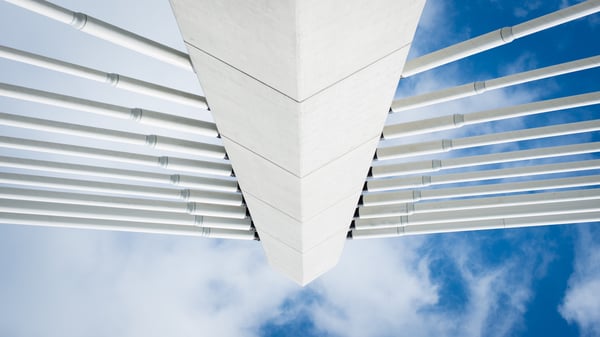Is your solution up-to-date?
Let’s say you’ve had the same leasing infrastructure for a long time. Over the years, you’ve continuously created new workaround solutions to meet your customers' needs. Most of your workarounds have been created ad-hoc, and many are manual. Wouldn’t automating and integrating these processes into your digital infrastructure be a game-changer?
There are several other key indicators that you require a modern leasing infrastructure. Besides manual processes, they include – but are not limited to – being restricted in meeting your customers' needs, the speed at which you can complete tasks and the quality of your delivery, and that your current system isn’t living up to new regulations.
If you can relate to any of these situations, it’s time for a change:
- You have several solutions in place just to be able to complete one task
- Your current system makes it take a long time to complete a task
- You identify the opportunity to automate manual processes as a result of too many workaround solutions
- Your current solution can’t meet the needs and wishes of your customers and staff – leading to lost business
- Your current system doesn’t support modern laws and regulations or processes that are required to complete specific tasks
The road to a modern leasing infrastructure
The leasing project's overall goal is to break down your current infrastructure and model a new one that fits your needs, meets regulations, and optimizes your business. The first step is to evaluate your existing workflows and processes – what works and what doesn’t?
To get a realistic view, interview different individuals and departments in your organization and ask their opinion. Once you have identified your needs and what areas to focus on, it’s time to model the new landscape. But since this is an intricate and complicated spiderweb of many different systems and processes, it’s essential to bring in external experts who specialize in modelling leasing infrastructures and lease management.
How Pearl Fintech helps you succeed
Pearl Fintech offers a comprehensive way of modelling your new infrastructure – from planning and development to management and support. We aim to give your company the best conditions to help customers make advantageous lease agreements. Based on our expertise, we:
1. Map out your current landscape
We begin with what we call “as-is” workshops, where we map out each component of your current processes and systems. These workshops are important to gain an overview of your existing infrastructure and serve as an opportunity for us to meet relevant people and ask questions. And if we see the need to dive deep into a particular aspect of your infrastructure, we hold ‘breakout sessions’ with relevant stakeholders to gain a better mutual understanding of that specific element.
We document all processes and workshops in both written and visual formats. We use the documentation to make the landscape easier to understand for those who aren’t participating in the project or actively working in the system.
2. Establish a unified terminology
It’s common for companies to use internal shorthands and abbreviations. Hence, we create a document that establishes what terminology to use going forward. This sets a common ground between parties and simplifies all communication.
3. Identify and analyze areas of improvement
Once we have mapped out your current landscape, we analyze and dissect the information and insights we have collected. Based on this, we identify findings in the form of potential areas of improvement – both long-term and short-term.
We might find that leasing, e.g. a car through your current system, involves many manual processes and different workarounds, which makes it take longer than necessary to get a structure in place. This would be a perfect example of a key area to focus on going forward.
4. Plan for the future
The next step is building your new infrastructure. We hold a number of “to-be” workshops where we present our findings and collaborate to map out the new architecture and agree on all its requirements. This is the starting point for what your future landscape will look like. The workshops facilitate discussions around non-functional requirements (NFRs) to understand different attributes of each process, such as usability, and to capture the users’ experience of the system and their wishes regarding what the new one should be able to handle.
We also create a ‘domain model’ that describes your organization’s new leasing structure and the relationships within it on a technical level. The model is a visual and conceptual representation of the new architecture. We use the model to visualize the different classes of your new system and the associations between them.
5. Create your MVP
Once we establish the new architecture and specify its requirements, we build your MVP based on the findings from our workshops and analyses. The MVP is the initial product of your new infrastructure. It includes the entirety of the new architecture, but on a fundamental level.
If we try to create a perfect product from the get-go, it’ll most likely end up with several irrelevant features. Hence, it’s beneficial to first build a robust skeleton and then add muscles and other body parts along the way. In other words, the MVP’s primary purpose is to prevent unnecessary or flawed elements and to gather feedback at an early stage. We then continuously add to and tweak your MVP over time – ensuring that your infrastructure is future-proof and fully functional at all times.
Not just a new system
Getting involved in the project with the will to change is crucial in developing your business. In addition to an optimal and streamlined way of working, you’ll learn a lot during the journey. It’s both exciting and educational to review your infrastructure and gain insights into what your organization can improve upon.
Take your leasing to the next level
Time to update or grow your leasing solution? Together with us, you can create a robust and sustainable system for the future. Contact us to start your journey!


